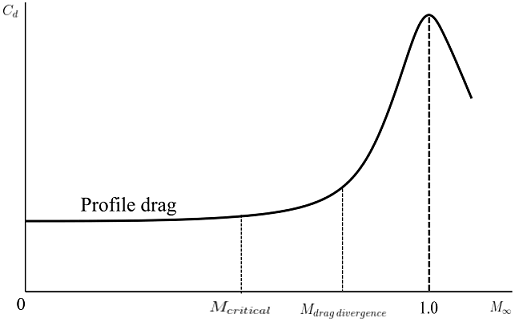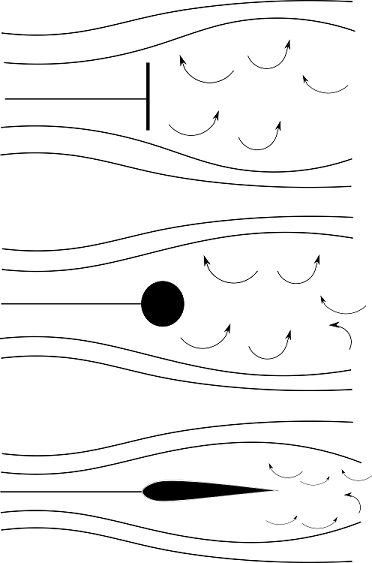What are form drag and profile drag?
What are form drag and profile drag?
Profile drag: Profile drag is the sum of of skin friction drag and pressure drag due to flow separation, which are due to the shape and size of the body that is due to the “profile” of the body.
Total drag coefficient for a finite wing is profile drag coefficient and induced drag coefficient.
Induced drag: Induced drag or drag due to lift is caused due to wing-tip vortices which trails downstream of the wing causing downwash, when an aircraft is in flight.
For the whole or complete airplane the total drag coefficient is sum of parasite drag coefficient which is composed of profile drag of the wing and friction drag of all other components that is exposed to the airflow, like fuselage, tail surfaces, landing gear and engine nacelles and induced drag coefficient. For transonic and supersonic speeds it also contains wave drag.
Wave drag: Wave drag is created at supersonic speeds by shockwaves.
Profile drag coefficient for a finite wing at a moderate angle of attack is almost same as its airfoil sections.
Total drag coefficient of the airplane varies as the angle of attack is varied because of change in the amount of separation of flow over airplane parts.
The sum of skin friction drag and pressure drag for a two-dimensional body is called the profile drag and for a three-dimensional body that is for a complete airplane, it is called the parasite drag.
Diagram for the variation of profile drag coefficient with Mach number which is showing the critical and drag-divergence Mach numbers and large drag rise near Mach 1.
 Variation of profile drag coefficient with Mach number
Variation of profile drag coefficient with Mach number
At subsonic speed, profile drag coefficient is relatively constant with freestream Mach number. The variation of coefficient of drag with free stream Mach number is shown. Coefficient of drag is almost constant for Mach number from 0 to drag divergence, which is composed of profile drag. There is a very large increase in coefficient of drag between drag divergence Mach number and a little above Mach 1, which is due to the wave drag because of generation of shockwaves. For supersonic speeds coefficient of drag decreases.
Pressure drag which is due to flow separation is also called the form drag.
For subsonic speeds, total drag coefficient for a finite wing is sum of profile drag and induced drag.
For an airfoil, as the angle of attack increases, separation of flow over the top surface of the airfoil begins to occur giving rise to pressure drag or form drag.
The drag due to separation of flow is called the pressure drag due to flow separation and is also known as the form drag. Large pressure drag is mainly caused by blunt bodies like vertical flat plate and circular cylinders.
 Separation of flow on different shapes
Separation of flow on different shapes



